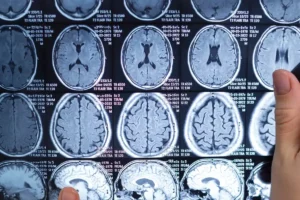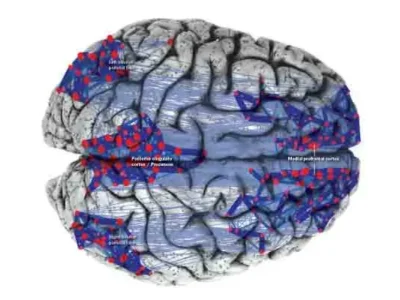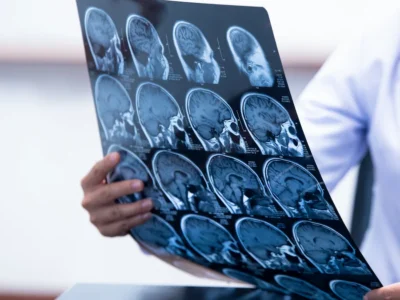Cardiologist Sameer Ather outlines four uncommon causes of stroke (ACV).
The stroke (ACV), also known as ictus, is one of the leading causes of death –it is the second leading cause of mortality in Spain– affecting around 130,000 people in our country each year according to data from the Spanish Society of Neurology (SEN). This condition occurs either due to the obstruction of a blood vessel (ischemic stroke) or due to its rupture (hemorrhagic stroke).
Due to inadequate blood flow, the brain’s nerve cells are damaged and, consequently, the nerve cells in the affected area also stop functioning. Various known risk factors and diseases can lead to this condition or make an individual more susceptible to it; these include cardiovascular diseases, high blood pressure, and atrial fibrillation.
However, there are some uncommon diseases and circumstances that can lead to this disorder. A physician may encounter a situation in which a low-risk patient has a clot with no apparent cause, as happened to Dr. José Biller of Loyola University (Chicago, USA).
When a patient has no known history of cardiovascular disease, does not smoke, and exercises regularly yet still suffers a stroke, it is useful to consider some of the uncommon causes of stroke. Considering the thousands of kilometers of vessels responsible for transporting 20–25% of the body’s blood, the possible causes can be multiple, and they include those highlighted below.
4 Uncommon causes of stroke
Moyamoya disease
Moyamoya disease is one of the uncommon causes of stroke. It is a rare disorder in which the carotid arteries progressively narrow over time. As the vessels narrow, they can rupture causing bleeding or become completely obstructed. The cause of the blood vessel narrowing is unknown, but it is suspected that the onset of the disease may be related to genetic abnormalities. Children are at greater risk of developing Moyamoya disease, presenting symptoms that include developmental disorders, speech disorders, and involuntary movements.
Severe brain damage is one of the consequences of this disease. What happens is that, to compensate for the loss of blood flow caused by the narrowing of the vessels, another network forms, but it is unable to meet the demand that the original vessels covered. Knowing the medical history of a patient with Moyamoya disease is essential to avoid serious medical problems. MRI, CT, and SPECT are diagnostic tests that serve to assess damage to the blood vessels.
Cavernous angioma (AC)
Also called AC; it is an abnormal cluster of brain blood vessels that dilate and have altered structure. Capillaries are not formed with elastic fibers as is usually the case with larger blood vessels, and the thickness of their walls is also thinner.
Due to the malformation of the blood vessels, they tend to break, leading to hemorrhagic strokes. The abnormal cells are located in a part of the body such as the spinal cord, the brain, or the brainstem.
Hearing or vision loss, headaches, and seizures are some of the symptoms produced by this disorder. Cavernous angiomas can begin to bleed, causing symptoms similar to those of a stroke. Doctors diagnose them using magnetic resonance imaging, since this group of blood vessels is not visible on standard angiograms. For this reason, patients cannot undergo catheter surgery. The severity of the condition depends on the level of bleeding.

Subscribe
to our
Newsletter
Antiphospholipid syndrome (APS)
Another uncommon cause of stroke is antiphospholipid syndrome. Antibodies can sometimes attack a healthy part of the body instead of fighting infections. In this disease, antibodies target phospholipids, substances essential for blood clotting. If phospholipids are compromised, they facilitate the formation of clots in blood vessels, thus depriving the brain of proper blood circulation.
When clotting is abnormal, problems such as recurrent headaches, nausea, and chest pain may arise. Family history represents a risk factor for developing this syndrome. People with lupus, blood infections, or who are taking certain medications are also at higher risk of having APS.
This disease is diagnosed through a blood test that detects the presence of the anti-β2–glycoprotein I antibody, anticardiolipin antibodies, and the lupus anticoagulant. Magnetic resonance imaging and computed tomography will help determine the affected area and the damage caused.
Reversible cerebral vasoconstriction syndrome (RCVS)
Reversible cerebral vasoconstriction syndrome is the last of the uncommon causes of stroke we discuss today. RCVS encompasses a broad group of disorders that involve problems of dilation and constriction of blood vessels. This condition causes the cerebral arteries to constrict, resulting in reduced blood flow.
Experts have not yet identified the causes of vasospasm. It is suspected that the changes that occur in the body after childbirth contribute to RCVS in women, who are also at greater risk of developing the condition than men. Due to narrowing of the blood vessels, RCVS is characterized by severe headaches. Reduced circulation in certain parts of the body interferes with primary functions.
Weakness on one side of the body, changes in vision, and seizures are other factors to consider when RCVS is suspected. A transient ischemic attack is one of the main complications of RCVS. The condition is reversible; with early diagnosis and treatment, the patient can recover within three months.
Conclusion
Depending on the underlying causes, some brain infarctions may be mild while others are severe. When a stroke is severe, it can cause mobility problems in part of the body or the entire body. Recovery after a stroke can be lengthy and requires intensive therapy to rehabilitate the affected parts of the body. Some stroke survivors must relearn how to move and speak.
Knowing not only the main causes of stroke, but also the uncommon causes, is essential for both physicians and people who are at very high risk of suffering a stroke.
If you enjoyed this article about uncommon causes of stroke, you may also be interested in the following articles:
“This article has been translated. Link to the original article in Spanish:”
4 Causas Infrecuentes del ictus







 Does ADHD increase the risk of developing conduct problems?
Does ADHD increase the risk of developing conduct problems?
Leave a Reply